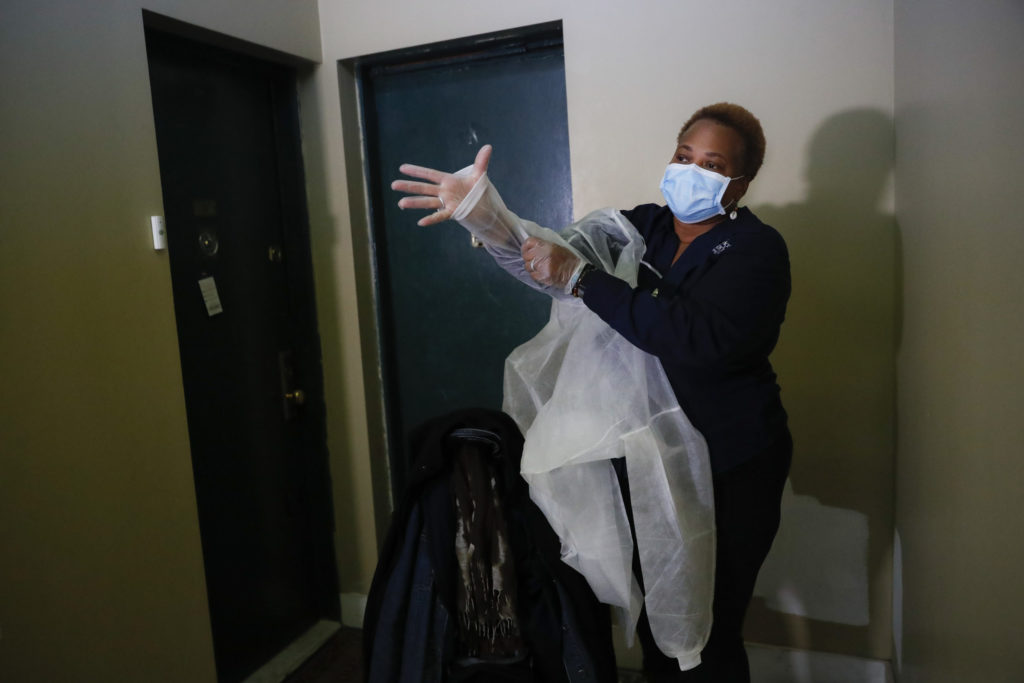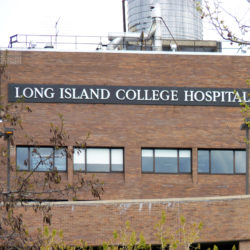
As NY COVID-19 deaths drop, Cuomo outlines regional restarts

NEW YORK (AP) — Gov. Andrew Cuomo outlined how stay-at-home restrictions could be eased for parts of New York where the coronavirus outbreak is less severe. New York City Mayor Bill de Blasio said that city-run health clinics will soon use a testing procedure that lets people collect samples themselves at a health care worker’s direction. The city also will close 40 miles of streets to cars next month to give pedestrians more room to move outside.
Here are the latest coronavirus-related developments in New York:
Regional re-openings:
Regional officials aiming to re-open their economies next month should make sure testing is up to speed and that there are enough hospital beds available to handle a combined load of coronavirus and flu patients, Cuomo said.The governor outlined re-opening guidelines as statewide hospitalization rates and deaths continue to decline from peaks earlier this month. The 337 deaths recorded statewide Sunday was the lowest daily tally this month and down from a high of 799 on April 8. More than 17,000 people have died in New York since the start of the outbreak.
Cuomo said at his daily news briefing that statewide stay-at-home restrictions set to expire May 15 will likely be extended in many parts of the state.
“But in some parts of the state, some regions, you could make the case that we should un-pause on May 15,” said Cuomo, who likened it to turning a valve a bit at a time.
Cuomo said decisions will be made and monitored based on rates of hospitalizations, antibody testing, diagnostic testing and data on infection rates. Regional officials need to be prepared to make sure there are enough workers to trace the contacts of infected people, enough places to isolate infected people and enough hospital capacity.
“Are you contemplating what will happen when the flu season kicks in in September, when we could potentially be dealing with COVID cases on top of flu cases?” Cuomo asked.
Preliminary results of statewide antibody tests, which check for substances the immune system makes to fight the virus, suggest the coronavirus is far less prevalent in some upstate areas compared New York City, a pandemic hot spot. While almost a quarter of people in New York City tested positive, the rate was below 2% in northern and central New York, according to preliminary estimates.
Construction and manufacturing jobs that represent low risks for workers will be among the first to resume once New York state begins reopening, Cuomo said Sunday.
Self-swab tests:
New York City-run health clinics will soon take a new tack on coronavirus testing, using a procedure that lets people collect samples themselves at a health care worker’s direction, de Blasio announced Monday.He said the “self-swab” tests would allow for more and easier testing and enhance safety for test-seekers and health care workers alike.
“This is something we’re going to start using aggressively because it will be better for everyone,” the Democrat said.
Up to this point, testing has mainly been done by health care workers, who insert a swab deep into a person’s nostrils. The feeling often makes someone sneeze or cough while the health care professional is present, city Health and Hospitals President Dr. Mitchell Katz said.
The new method is set to start within the next few days at eight community testing sites around the city. The process will work like this: A health care worker will explain how to administer the test, and then the person will take a nasal swab, with a health professional watching via a mirror to offer guidance, Katz said. The person getting tested then will spit into a cup for a second sample for cross-checking. The samples will then be given to a health care worker and tested.
De Blasio said the method will allow health care workers and test-seekers to keep more distance; reduce the need to devote health care workers to administering tests, and allow clinics to administer as many as 20 tests and hour, instead of 15.
So far, more than 5,000 people have been tested at the city-run community sites since April 17.
Open streets to pedestrians
De Blasio said the city will close 40 miles of streets to cars next month and up to 100 miles during the duration of the COVID-19 crisis in order to give pedestrians more room to move while maintaining social distancing.“During this crisis the goal is to get up to 100 miles of those open streets,” said de Blasio, who had earlier resisted calls from advocates for pedestrians and cyclists to close off large swaths of roadways to cars.
De Blasio said an early focus of the plan will be streets near parks, since people are already gathering there. He said he is working out details with the City Council, which passed a bill last week to require the city’s transportation department to close up to 75 miles of streets to cars.
Short stretches of four streets were closed to cars during a pilot program that started in March and ended after less than two weeks.
De Blasio had said previously that New York was “profoundly different” from cities like Oakland and Minneapolis that have opened up miles of streets to pedestrians during the pandemic, arguing that keeping cars off streets that are designated for walking would require too much police manpower.
In other developments
New York has canceled its Democratic presidential primary that was scheduled for June 23 amid the coronavirus pandemic, but will still hold its congressional and state-level primaries on that date.
Former Democratic presidential candidate and U.S. Senator Bernie Sanders announced earlier this month that he had suspended his campaign but a lawyer for Sanders’ campaign had asked the board not to cancel the New York primary.
Leave a Comment
Leave a Comment

Brooklyn Boro
View MoreNew York City’s most populous borough, Brooklyn, is home to nearly 2.6 million residents. If Brooklyn were an independent city it would be the fourth largest city in the United States. While Brooklyn has become the epitome of ‘cool and hip’ in recent years, for those that were born here, raised families here and improved communities over the years, Brooklyn has never been ‘uncool’.


